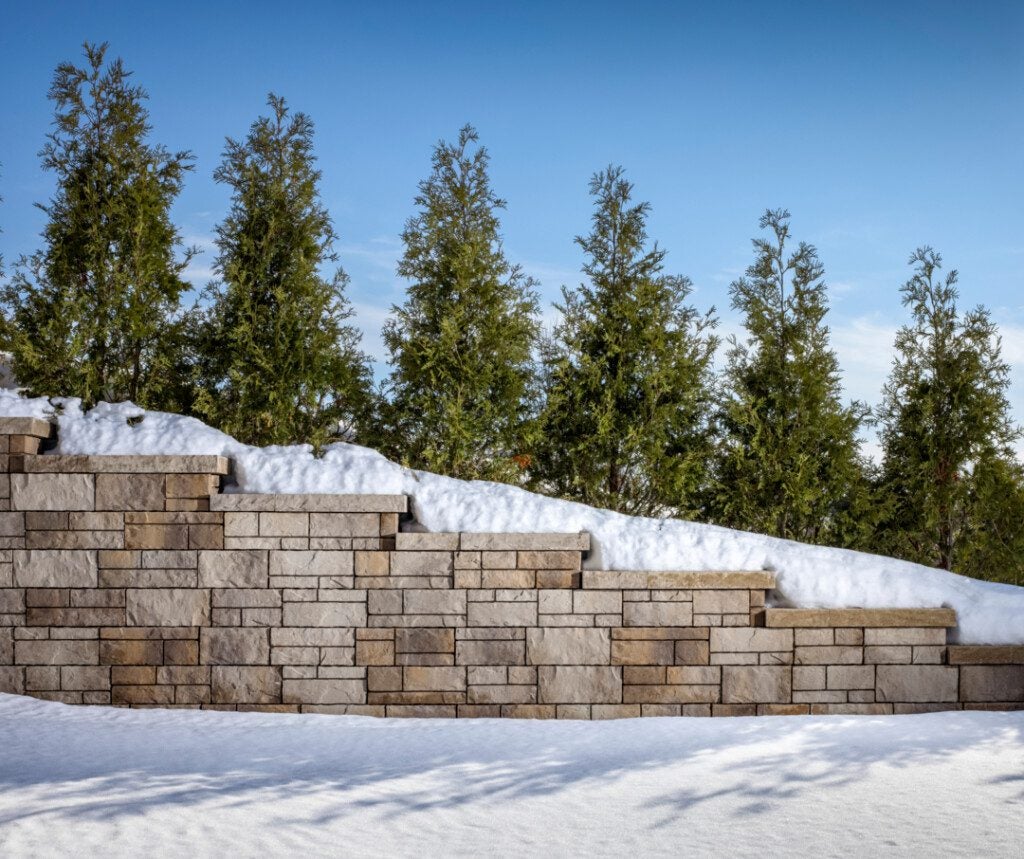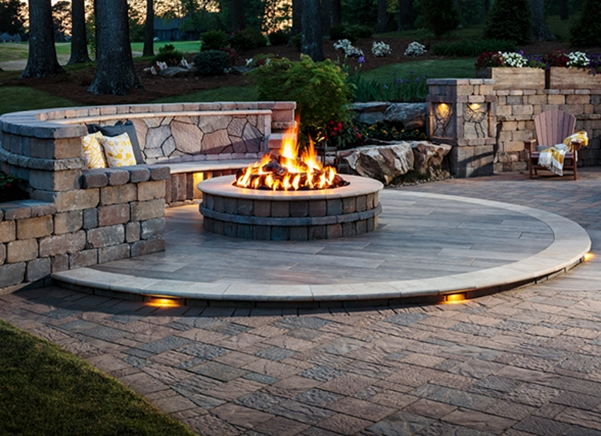Winter is fast approaching, and for many regions that can mean cold, icy and gray days – the kind of weather that can wreak havoc on paved surfaces if they’re not cared for properly. While pavers are naturally heartier than other surfaces like stamped concrete, taking time to prepare for winter weather can save your hardscapes from unnecessary wear and tear and help to prolong the life of your pavers.
Winterizing Your Pavers
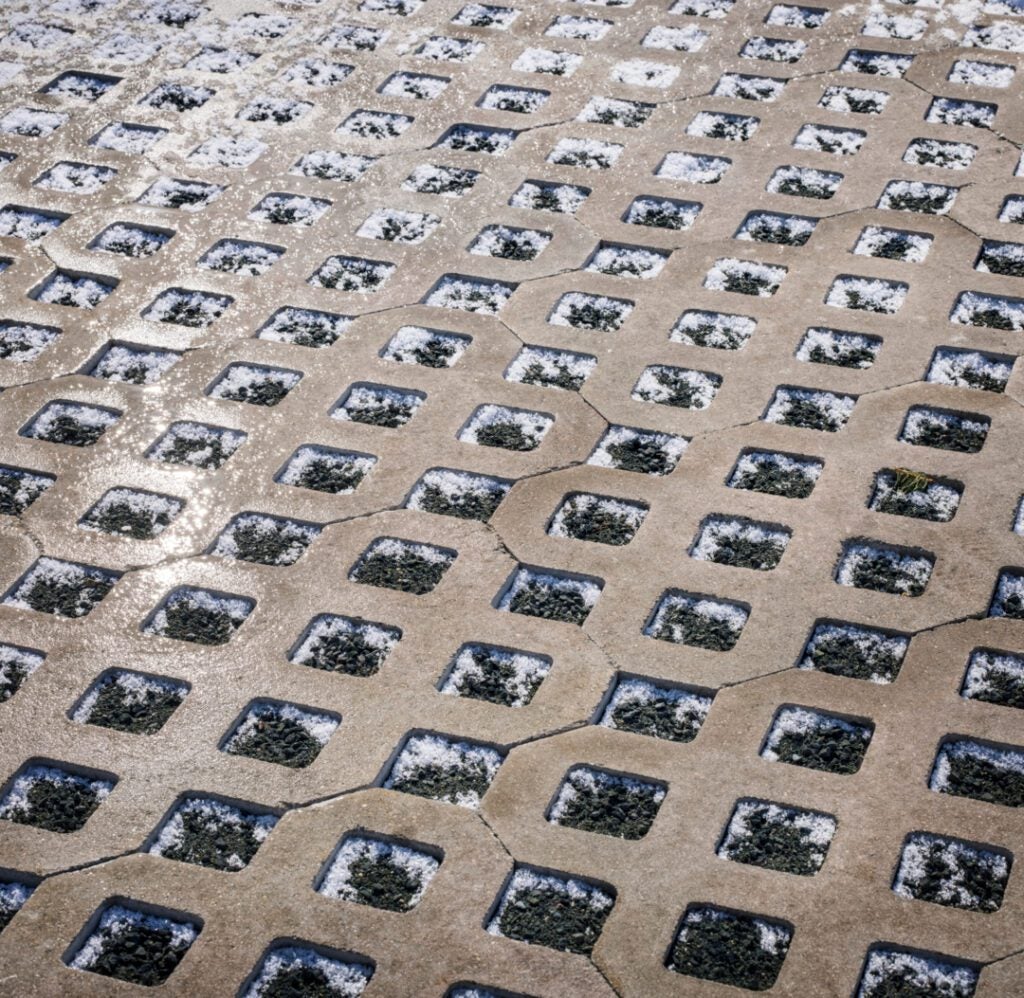
As long as your sealant application is up to date (see below), you won’t need any specialized tools or products in order to prep your pavers ahead of winter – just a bit of time and muscle. Here are the steps:
- Remove heavy items. To prevent sunken spots from forming during wet and freezing weather, put patio furniture, heavy flowerpots and other outdoor décor in storage for the winter so that nothing rests directly on your pavers.
- Assess water runoff. Do your gutter downspouts flow onto your paver patio or driveway when it rains? Letting that moisture freeze can have a devastating effect on your pavers. Redirect downspouts onto your lawn or landscape border – your plants and your pavers will both thank you.
- Keep ‘em clean. To prep for winter, you’ll first need to clean up from fall. Remove leaves, sticks, pine needles, etc. to keep your pavers from getting stained by wet and decaying debris.
Seal Pavers Ahead of Time
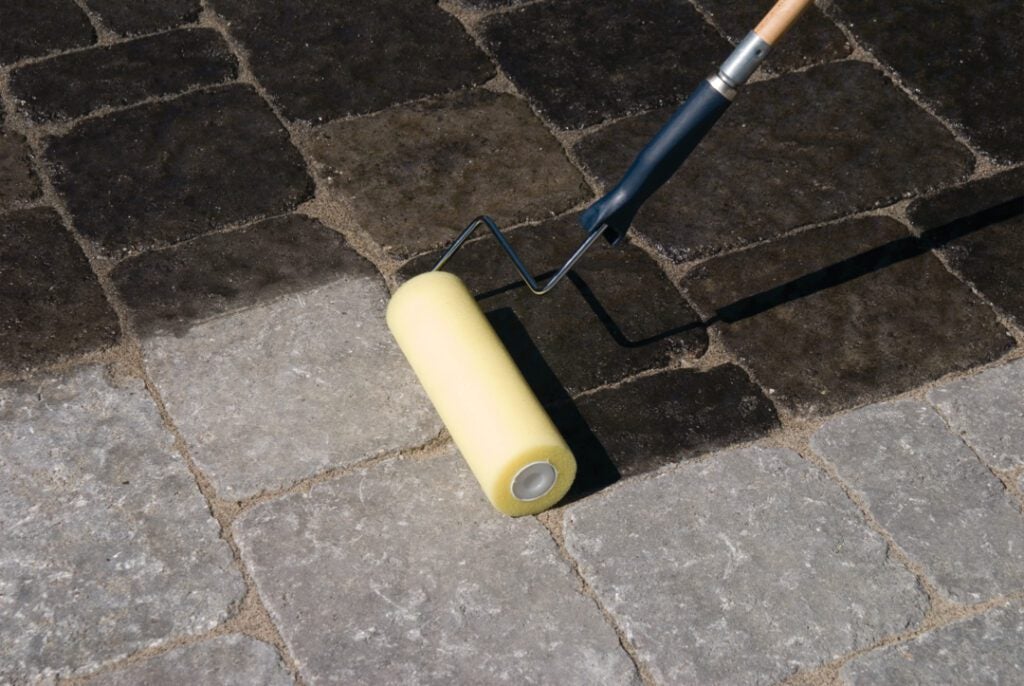
Once your patio is cleared and prepped, you may want to consider sealing your pavers with a hardscape sealant designed to protect stones from getting scraped, chipped or eroded by extreme weather. We recommend Techniseal® Sealant, which creates an active bond with the paver to prevent contaminants like acids, alkalis and deicing salts from penetrating and damaging pavers.
Sealants come in a variety of finishes: natural-look, wet-look, color-boosting, and more. Spot test your chosen formula before applying to the rest of your patio and reapply every 3-5 years or as recommended by the manufacturer.
Clean Sweep
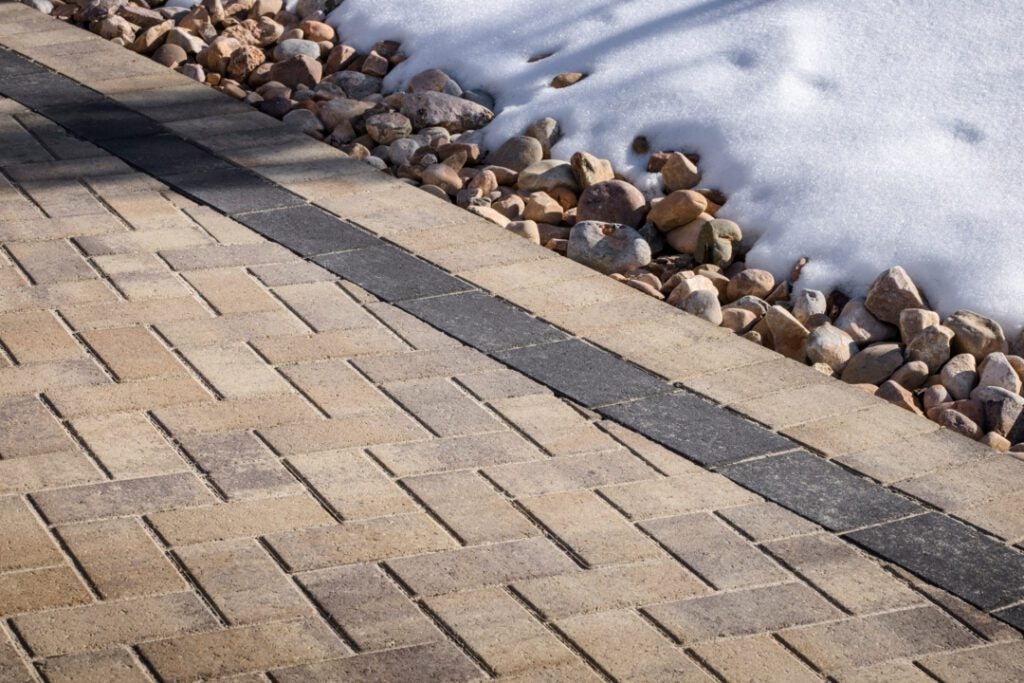
One of the easiest ways to maintain your pavers during winter is to simply sweep them whenever possible. Sweeping debris and snow off of your pavers protects your pavers against the freeze-thaw cycle by keeping the pavers drier. A 24” soft-bristled push broom will make quick work of the job.
De-Ice With Care
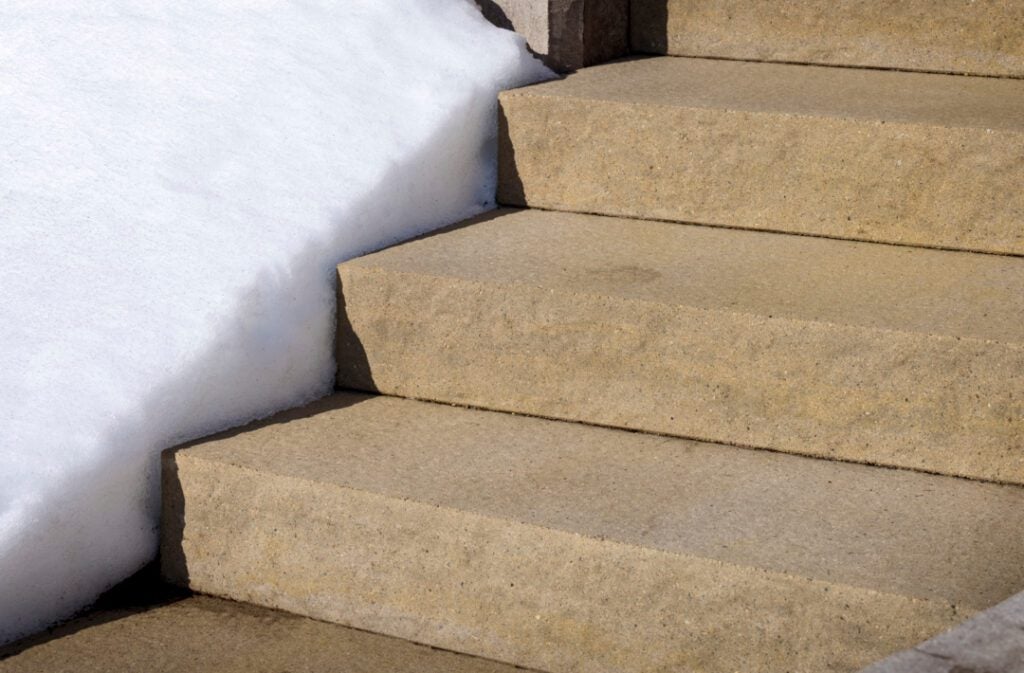
When the ice finally hits, skip the salt and opt for a paver-safe de-icer like magnesium chloride. Most salt-based de-icers will do more harm than good if spread over your hardscape since sodium will cause your pavers to degrade more quickly. A sodium-free ice-melt product like this one from Enviro-Thaw is a safer solution.
Everything About Concrete has a good roundup of which de-icers are best for which areas, in which they compare de-icers across three main categories: environment, temperature and corrosive properties. Take a look to find the best product for your needs.
Shovels and Plows
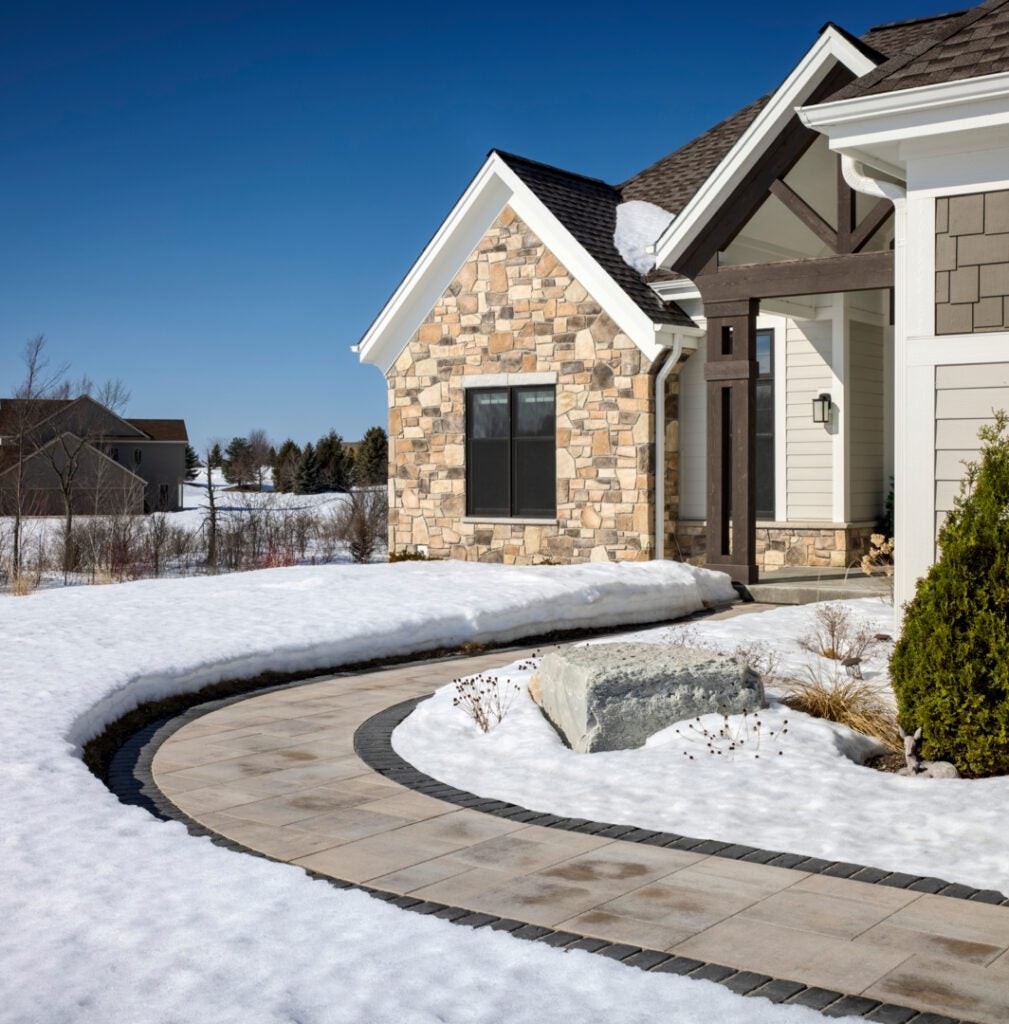
It’s crucial when shoveling your patio or driveway that you use a plastic-bladed shovel whenever possible since metal shovels can cause a significant amount of damage to your pavers – scratching and even cracking them. This model features a poly blade but a sturdy steel handle to stand up to whatever snow comes your way.
However, your best option is to avoid the shovel altogether and use a snowblower – but be sure to set the depth gauge to at least 1/8” above and use a plastic-edged shoe if possible. According to Matt Kwarta, our Manager of Marketing and Customer Relations, “Pavers with dimpled or textured surfaces have high and low points, which lend a more natural aesthetic appeal. Therefore, it is important for snow removal equipment to have the proper spacing, bumpers and rubber blade guards to protect the surface of the driveway.”
Overall, caring for your hardscape during the winter is pretty simple. The trick is to prepare ahead of time and make sure that you have the right equipment in place to get the job done.
